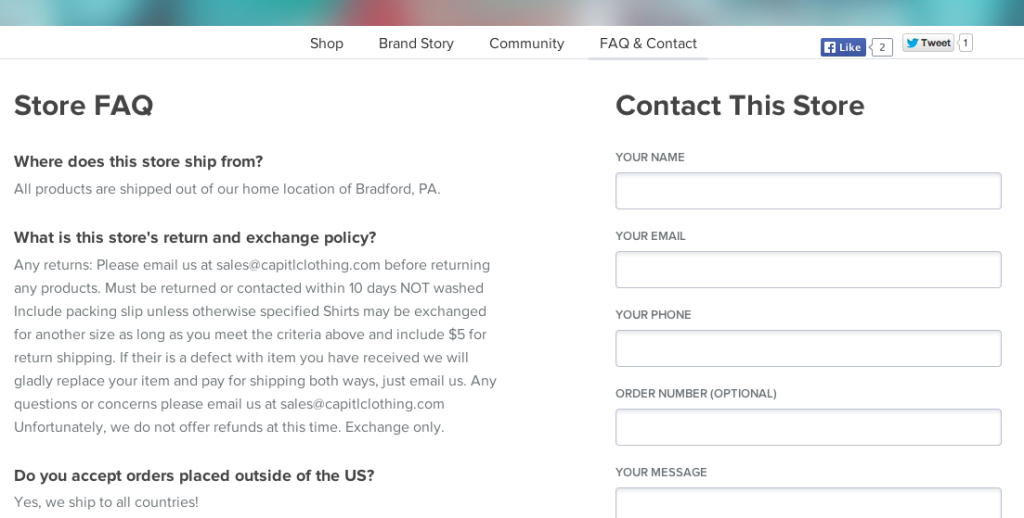Opening an online store? Don’t Overlook These 3 Things

It’s exciting to open your first online store! You’re enthusiastic about setting up your little corner of the web, looking forward to getting your name out there, and—of course—the orders rolling in! But sometimes, in the race to get it all done, a few important things can fall by the wayside. Don’t let that happen to you! The things that might seem like trivial details are usually things that reap the most long-term benefits for store owners.
Our advice? Don’t compromise on these key elements of your online store!
1. Frequently Asked Questions (FAQs)
OK, FAQs won’t be the most exciting content you write, but they’re one of the most important. Why? Well, besides giving your users answers to common questions (saving you time on email!) and building trust, FAQs can be super helpful on the SEO side as well, enriching your content with keywords.
Storenvy provides you with a template of the most frequently asked questions, such as where your store ships from, how long it’ll take to receive an item, and what your refund policy is. If your e-commerce solution doesn’t have a form for you to fill out, make sure you add it.
Once you have FAQs set up, you need to keep them updated. No one likes outdated info! Keep a Google Doc for your team (no matter how big or small) of questions you receive a lot, then batch add them to your FAQs page every month, or another interval. It’s well worth the investment of time to keep your FAQs fresh.

2. Shipping rates
Shipping rates are just part of online shopping, and the info you provide about them can make or break a customer’s experience with your store. Before opening your store, research how much you’ll need to charge in order to cover your shipping expenses.We recommend either finding flat rate boxes that’ll fit your items, a postal scale to get exact weight, and the right tools for measuring dimensions. Still not sure if you’re on the right track? Check to see what other stores are charging for shipping in order to form a baseline.
Remember, you can always go back and adjust your shipping rates, but whatever you do, don’t ask customers to cover any shipping costs that weren’t originally a part of the transaction (that’ll pretty much guarantee a negative experience). If you’ve somehow miscalculated your shipping cost and lose money: Take a deep breath. Then chalk it up to the cost of learning how to run your business, then correct the problem.
Worried about other fees you might incur when preparing your item for shipment? Remember you can also build in some “handling” fees to cover packaging expenses and supplies.
3. Processing time and extra information
Always put yourself in your customer’s shoes, asking yourself what information they’d need to know to make an informed purchase. Are they wondering what kind of material a product features? The size and dimensions of an item? If it’s handmade? Is there something that separates it from similar items in the same category? Provide answers to these and other questions in your product description and you’ll be on your way to delivering a great customer experience–while also limiting confusion and returns post-order.
Another thing to think about? Shipping times and return policies. State these bad boys upfront so that your customers know precisely what to anticipate after they hit ‘submit’ on their order.

Set Expectations When Setting Up Shop
Providing information like the kind outlined above will go a long way towards building a successful business. Since the most important type of customer is a return one, you’ll also be ensuring that their expectations have been set appropriately, and potentially leading to a return visit and purchase.



